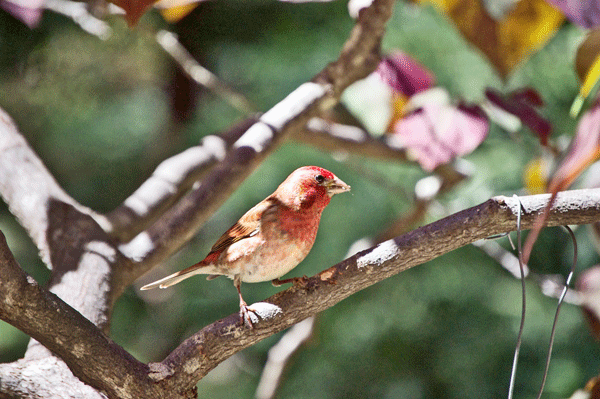My garden is alive with birds. Butterflies and bees also seem to find it an interesting place to visit.
I’m always on the look out for plants that will attract even more of these exquisite creatures. Fortunately, there are many that have low water requirements, which is a prerequisite these days.
How do you plant something new given the new water restrictions, and what about those existing trees, shrubs, and perennials that birds, bees, and butterflies depend on? How much water do they need to survive?
Everybody loves winged creatures in the garden. Adding plants that attract birds, bees, and butterflies is a common request for nearly every garden that I design.
Trees that provide fruit, seeds, nectar, and protein from insects attract many kinds of songbirds. Our native big leaf maple is a favorite of the Evening Grosbeak who relishes the seeds and early spring buds.
Another bird magnet is the dogwood. Our Pacific dogwood, as well as the Eastern dogwood, and even the hybrid of the two, Eddie’s white wonder, are all very valuable sources of food for many birds. Their summer berries are high in fat and important for migratory and wintering birds.
In every garden possible, I try to include low water-use shrubs and perennials that attract birds. My favorite Lesser Goldfinch is partial to the seeds of yarrow, buckwheat, and aster and Kevin’s mahonia is favored by Western bluebirds.
Blooming now in our own neck of the woods is Mexican elderberry. Their butter-yellow flowers will form purple berries rich in carbohydrates and protein, and will attract an incredible number of birds. And I always can find space for another variety of manzanita or ceanothus.
Both hummingbirds and butterflies are attracted to flowers that provide nectar. Among their favorites that won’t break your water budget are natives such as penstemon and salvia. Galvezia, mimulus, monardella, California fuchsia, and ribes are also important nectar sources for them in your garden.
Add a couple non-native, drought tolerant perennials like lavender, gaura, coreopsis, verbena, scabiosa, lantana, and wallflower to provide a feast for all your winged visitors.
So how much water do different types of plants need during the heat of summer?
As a rule of thumb, trees and large shrubs need deep but infrequent watering. They should be on a separate valve than your smaller shrubs and perennials. After the last two winters of little rain, many trees are showing signs of stress.
It’s not easy to replace a tree that will take 20 years to regrow if you have to replant. Water ornamental trees one to three times per month, depending on soil type. Tree roots are 12 to 36 inches deep and require 10 gallons of water per inch of trunk diameter.
Apply water with a soaker hose, drip system emitters, or a hand held hose with a shut off and soft-spray attachment, according to your water districts restrictions.
Don’t dig holes in the ground in an effort to water deeply; this dries out roots even more. Be sure to water the root zone to the indicated root depth every time you water. Watering deeper than the root zone only wastes water. You can test how deep you watered by pushing a smooth rod — 1/4 to 3/8 inches in diameter — into the ground soon after you irrigate. The soil probe should easily slide through the wet soil, but when the probe reaches dry soil, it will be more difficult to push.
The roots of smaller shrubs are 12 to 24 inches deep in the soil. Established native shrubs may only need monthly watering to keep them looking their best, while other shrubs may need watering every seven to 10 days during the heat of the summer. Perennial roots only go down 12 inches or so, and may need watering once or twice a week depending on the plant’s water needs.
With lots of mulch and the above watering tips, you can keep all your plants happy and healthy for everyone to enjoy.
– Jan Nelson, a landscape designer and California certified nursery professional, will answer questions about gardening in the Santa Cruz Mountains. E-mail her at ja******@*ol.com, or visit www.jannelsonlandscapedesign.com to view past columns and pictures.













